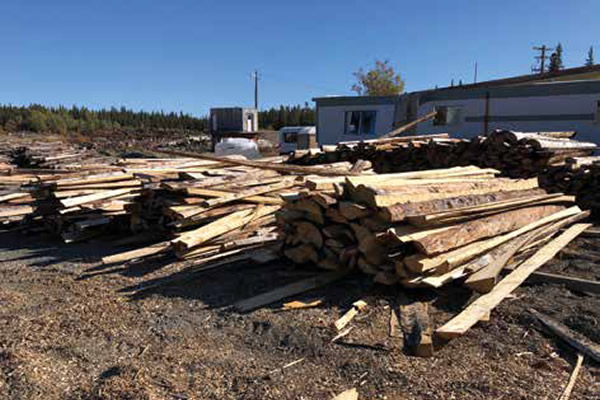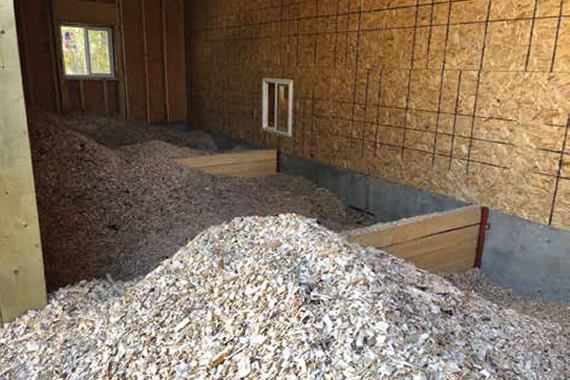Seeing the forest for the trees — Teslin Tlingit Council
We have archived this page and will not be updating it.
You can use it for research or reference.
Source: The State of Canada’s Forests Annual Report 2019. Download the PDF version from our publications database.
The Teslin Tlingit Council is similar to many communities in Northern Canada – tight-knit and community-oriented, with strong ties to the land. The Teslin Tlingit Council take pride in their ability to see the big picture – to look at immediate needs and transform them into community opportunities.
For example, when the community was considering a project which required clearing a forested area, the cheapest option for the project was to bulldoze the trees and burn them as waste. However, the Teslin Tlingit Council took a step back and saw the strategic opportunity to hire local workers to manually remove and process the trees, and use the biomass as fuel. It may have cost the project more money, but this broad thinking offset that increased cost by creating two years’ worth of fuel for 15 community buildings, as well as employment for several community members.

This firm belief in engaging the community has deep historical roots with the Teslin. Blair Hogan, Executive Councillor of the Ishkitan (Frog) Clan and local business owner, says he remembers the “golden age” of prosperity in Teslin in the early 2000s. “There were no idle hands,” Hogan says. But the recession in 2008, and subsequent strain on the forest industry, led to a large segment of the population having no opportunities to work in forestry – even though they wanted to.
Fast forward to 2013, when the Teslin posted a job opportunity for slashers – workers to clear brush and unwanted material from harvesting areas. Forty of the 170 community residents applied. Seeing a huge opportunity to re-energize the community, the Teslin re-committed to growing their forestry sector, and by 2016 had finalized their timber harvest plans and commissioned their own biomass energy strategy.
Now, in 2019, Teslin’s forest industry is flourishing, with the Council currently working on $26 million of community development projects. Hogan describes it like this. “We constantly build capacity and reinvest in our community. Currently, 80-85% of all forestry labour in the community – biomass boiler technicians, harvesters, sawmill workers – are Teslin. Our philosophy is to see the bigger picture, to take the longer view, and to see how everything is interconnected.”

Photo credits
- Photos courtesy of Simon Bridge.
Page details
- Date modified: